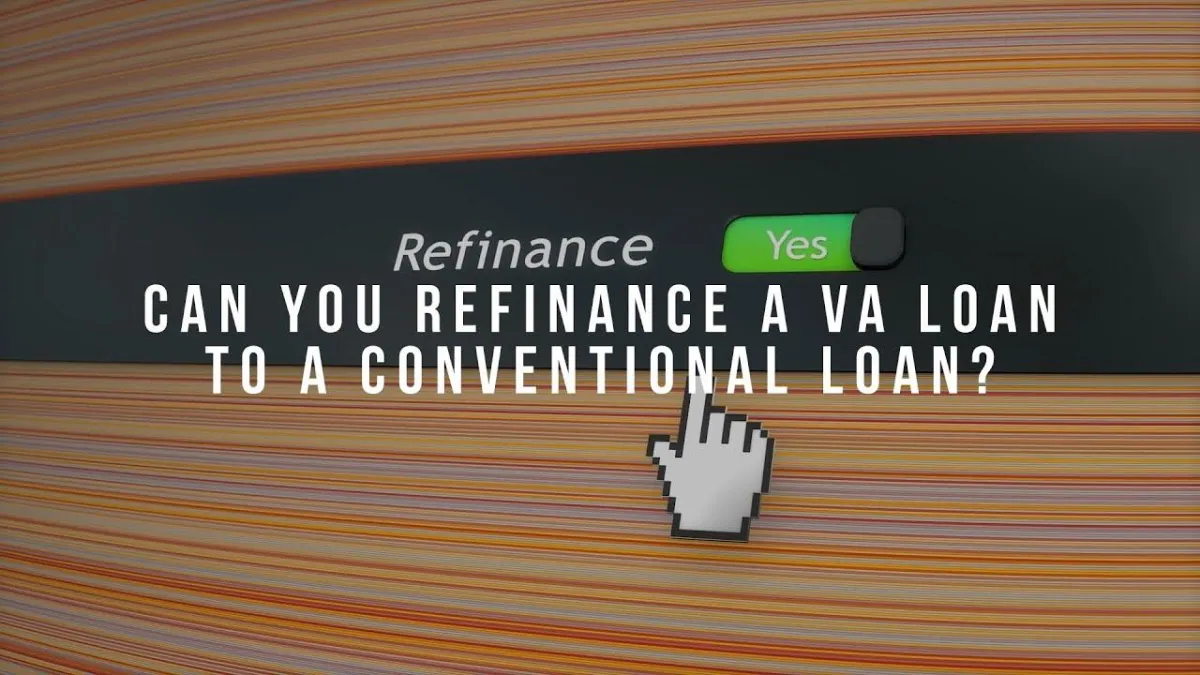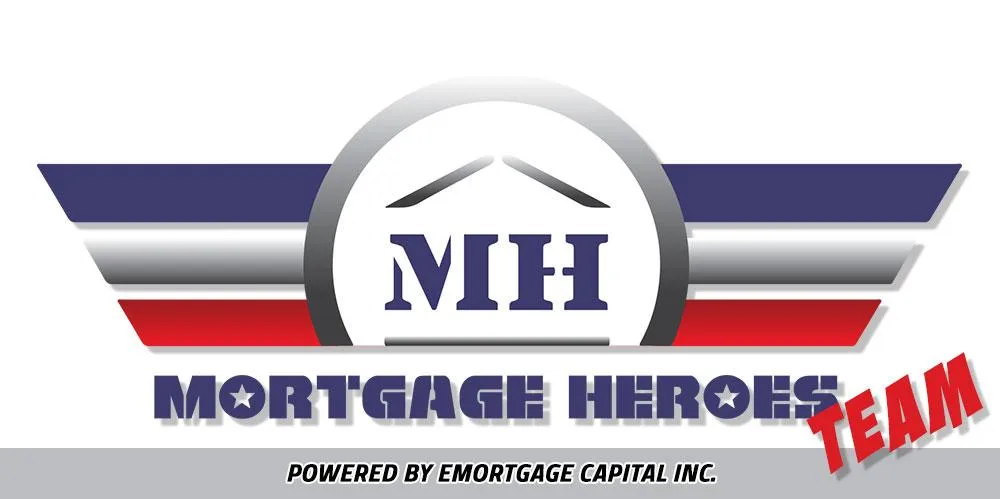
Can You Refinance a VA Loan?
If you're a veteran or active service member with a VA loan, you might be wondering about your refinancing options. Whether you're looking to lower your interest rate, reduce your monthly payment, tap into your home equity, or switch to a different loan type altogether, understanding your VA loan refinancing options is essential for making informed financial decisions.
This comprehensive guide will answer your most pressing questions about VA loan refinancing, including how many times you can refinance a VA loan and whether you can convert your VA loan to a conventional loan.
How Many Times Can You Refinance a VA Loan?
One of the most common questions homeowners have about VA loan refinancing is whether there's a limit to how many times they can refinance.
Related: Best VA Loan Lender
No Official Limit on VA Loan Refinancing
The good news is that there is no official limit on how many times you can refinance your VA loan. As long as you meet the eligibility requirements and the refinance makes financial sense, you can refinance your VA loan multiple times throughout your homeownership journey.
However, while there's no hard cap on the number of refinances, there are practical considerations that come into play:
Lenders will evaluate your credit score and income for each refinance application
Each refinance must demonstrate a tangible financial benefit to you, the borrower
You'll need to pay closing costs with each refinance, which affects the break-even point
There may be waiting periods between refinances (typically 210 days from your last loan's first payment)
VA Loan Refinancing Options
When refinancing a VA loan, you generally have two primary options:
1. VA Interest Rate Reduction Refinance Loan (IRRRL)
The VA IRRRL, commonly known as the "VA Streamline Refinance," is designed specifically to lower your interest rate and reduce your monthly mortgage payment. This option offers several advantages:
Streamlined process with minimal paperwork
No appraisal required in most cases
No income verification typically needed
Lower funding fee than other VA loan options
Can be completed quickly with less hassle
To qualify for an IRRRL, you must already have a VA loan that you're refinancing, and the new loan must provide you with a tangible financial benefit, such as a lower interest rate or more stable loan terms (like refinancing from an adjustable-rate to a fixed-rate mortgage).
2. VA Cash-Out Refinance
The VA Cash-Out refinance is a more versatile option that allows you to:
Access your home equity by refinancing into a larger loan amount
Convert a non-VA loan (such as FHA or conventional) into a VA loan
Pay off other debts or fund home improvements
Potentially change the names on your loan
Unlike the IRRRL, a VA Cash-Out refinance requires a full application process, including:
Credit and income verification
A new appraisal of your property
Documentation of your military service eligibility
Underwriting review
This option provides more flexibility but requires more documentation and typically has a higher funding fee than the IRRRL.
Can You Refinance a VA Loan to a Conventional Loan?
Another common question veterans have is whether they can refinance their VA loan to a conventional loan. The answer is yes, you can refinance from a VA loan to a conventional loan, and there may be several scenarios where this makes sense.
When to Consider Converting to a Conventional Loan
Here are some situations where refinancing from a VA to a conventional loan might be beneficial:
Freeing Up Your VA Loan Entitlement
One of the most compelling reasons to refinance to a conventional loan is to restore your VA loan entitlement. Your VA loan entitlement is the amount the Department of Veterans Affairs guarantees on your behalf, and it determines how much you can borrow without a down payment.
If you've used your VA entitlement for your current home but want to purchase another property with VA financing, refinancing to a conventional loan can free up your entitlement for future use. This strategy is particularly useful if:
You're planning to keep your current home as an investment property
You're moving but don't want to sell your current home immediately
You want to use your VA benefit for a more expensive home in the future
Sufficient Home Equity
Converting to a conventional loan makes the most financial sense when you have sufficient equity in your home. Typically, you'll want at least 20% equity to avoid paying private mortgage insurance (PMI) on your new conventional loan.
If you have less than 20% equity, you'll be required to pay PMI until you reach that threshold, which could negate some of the benefits of refinancing.
Related: Best VA Loan Lender
Potentially Better Terms
While VA loans often offer competitive interest rates, there may be situations where conventional loan terms are more favorable. Factors that might make conventional loans more attractive include:
Current market conditions favoring conventional loans
Special conventional loan programs you might qualify for
Changes to your financial situation that make you eligible for premium conventional rates
Elimination of the VA funding fee
Considerations When Refinancing to Conventional
Before making the switch from a VA to a conventional loan, consider these important factors:
Stricter Qualification Requirements
Conventional loans typically have more stringent requirements than VA loans:
Higher credit score requirements (usually 620 or higher, with the best rates reserved for scores above 740)
Lower debt-to-income ratio limits
More rigorous income verification
Potentially higher cash reserves needed
Loss of VA Loan Benefits
When you refinance to a conventional loan, you'll lose some of the benefits that come with VA loans:
No down payment requirement (conventional loans typically require at least 3-5%)
No mortgage insurance for loans with less than 20% equity (PMI will be required)
More flexible qualification standards
VA foreclosure avoidance assistance
Closing Costs
As with any refinance, you'll need to pay closing costs, which typically range from 2-5% of the loan amount. These costs can include:
Loan origination fees
Appraisal fees
Title insurance
Credit report fees
Recording fees
Potentially other lender fees
Carefully calculate your break-even point—how long it will take for the benefits of refinancing to outweigh the costs—before proceeding.
Making the Right Refinancing Decision
Whether you're refinancing to another VA loan or converting to a conventional loan, the decision should be based on your specific financial situation and goals.
Factors to Consider for Any Refinance
1. Financial Goals
Identify what you're hoping to achieve with a refinance:
Lower monthly payments
Reduced interest over the life of the loan
Access to home equity
Elimination of mortgage insurance
Freeing up VA entitlement
2. Break-Even Analysis
Calculate how long it will take to recover the costs of refinancing through monthly savings:
Total closing costs ÷ Monthly payment reduction = Months to break even
If you plan to stay in your home longer than the break-even point, refinancing may make financial sense.
3. Current Market Conditions
Evaluate how current interest rates compare to your existing rate. Generally, refinancing makes sense when you can reduce your interest rate by at least 0.5 to 1 percentage point, though this can vary based on your specific situation.
4. Loan Term Impact
Consider how changing your loan term affects your overall financial picture:
Refinancing to a shorter term can save interest but may increase monthly payments
Extending your term can lower payments but may cost more in interest over time
Working with the Right Lender
The refinancing process can be complex, especially when converting between loan types. Working with a lender who has expertise in both VA and conventional loans can make a significant difference in your experience and outcomes.
Related: Best VA Loan Lender
Look for a lender who:
Has specific experience with VA loans and refinancing
Can clearly explain the pros and cons of different options
Offers competitive rates and fees
Has positive reviews from other veterans
Takes time to understand your unique financial situation and goals
Conclusion: Flexibility for Your Financial Future
The ability to refinance your VA loan—whether to another VA loan or to a conventional loan—gives you flexibility to adapt to changing financial circumstances and goals. There's no limit to how many times you can refinance your VA loan, and you have the option to switch to a conventional loan when it makes sense for your situation.
Before making any refinancing decision, carefully weigh the costs against the benefits, consider both short-term and long-term implications, and consult with financial advisors or loan specialists who understand the unique aspects of VA loans.
By making informed refinancing choices, you can maximize the value of your hard-earned VA benefits while optimizing your overall financial health and working toward your homeownership goals.
We Got Your Six!
Mortgage Heroes has been helping Active Military and Veterans for more than 15+ years. This page is made to help all military families get the answers they are looking for when it comes to housing. Whether its questions about using your VA or new listings in SD, Mortgage Heroes are here to support just as each military member has supported this country!
Listen to the Mortgage Heroes Podcast on your favorite platform.

